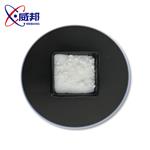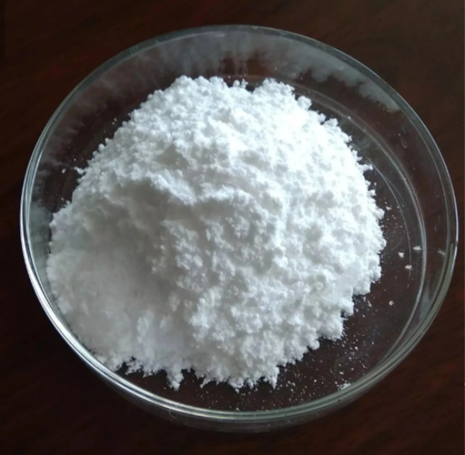Salicylamide: Melanin-Inducing Activity, Antiviral Derivatives & Antigonorrheal Potential
Salicylamide is the common name for the substance o-hydroxybenzamide, or amide of salicyl. It is a non-prescription drug with analgesic and antipyretic properties. It has similar medicinal uses to aspirin. Salicylamide is used in combination with both aspirin and caffeine in the over-the-counter pain remedies. Salicylamide (ASA) blocks prostaglandin synthesis. It is non-selective for COX-1 and COX-2 enzymes. Inhibition of COX-1 results in the inhibition of platelet aggregation for about 7-10 days (average platelet lifespan). The acetyl group of acetylsalicylic acid binds with a serine residue of the cyclooxygenase-1 (COX-1) enzyme, leading to irreversible inhibition. This prevents the production of pain-causing prostaglandins. This process also stops the conversion of arachidonic acid to thromboxane A2 (TXA2), which is a potent inducer of platelet aggregation. Platelet aggregation can result in clots and harmful venous and arterial thromboembolism, leading to conditions such as pulmonary embolism and stroke.

Salicylamide Enhances Melanin Synthesis in B16F1 Melanoma Cells
Non-steroidal anti-inflammatory drugs (NSAIDs) can directly suppress cyclooxygenase (COX) activity. COX catalyzes the conversion of arachidonic acid to prostaglandins. Therefore, NSAIDs can reduce pain, decrease fever, and prevent inflammation. Melanin is a key determinant of skin color, and melanin content is increased by exposure to UV radiation. Melanin has an important role in the absorption of harmful UV radiation and in the reduction of UV-induced DNA damage. Recently, we found that acetylsalicylic acid can also inhibit melanin synthesis in murine melanoma cells. We demonstrated that several other NSAIDs could downregulated the expression of melanogenic genes, including Mitf and tyrosinase. Salicylamide is an over-the-counter drug used as an analgesic and antipyretic agent. Recently, Alhashimi et al. (2019) reported that salicylamide exerted antibacterial effects in multidrug-resistant gonorrhea. Moreover, Chowdhury et al. (2021) suggested that salicylamide is a promising drugs for the treatment of the novel coronavirus disease 2019 (COVID-19). The identification of new NSAIDs effects is very important for the discovery of additional opportunities for drug repositioning. To the best of our knowledge, there has been no study on the effect of salicylamide on melanin synthesis. In this study, we investigated the effect of it on melanogenesis in B16F1 melanoma cells and elucidated the underlying mechanism.[1]
Melanoma cells were treated with or without salicylamide for the indicated time periods. Thus, we can estimate the amount of active tyrosinase generated and removed by de novo synthesis and proteolysis, respectively. The intracellular active form of tyrosinase was enhanced in a time- and dose-dependent manner. In the melanin content assay, the cells did not show any significant enhancement 24 h after treatment. However, we confirmed that the active form of intracellular tyrosinase was up-regulated only after 24 h treatment. These results show that salicylamide not only increases tyrosinase enzyme activity but also induces tyrosinase expression. Skin and hair color are directly related to beauty and attractiveness. Abnormal melanin synthesis leads to several skin disorders. For example, melanin overproduction leads to melasma, freckles, and post-inflammatory hyperpigmentation. In contrast, melanin underproduction leads to vitiligo and leukoderma. Vitiligo is one of the most common depigmentation disorders that affects an estimated 0.5%-1% of the world population. In conclusion, our results indicate that salicylamide can induce melanin synthesis rapidly, mainly by upregulating tyrosinase expression via Mitf transcription. Therefore, this study demonstrates that salicylamide may be a useful inducer of melanogenesis in cosmetics (including for hair graying) or for the medical treatment of hypopigmentation disorders.
Therapeutic Potential of Salicylamide Derivatives for Combating Viral Infections
There has been more than ten significant epidemics or pandemics of various viral diseases in the past two decades of the twenty-first century. This includes dengue, severe acute respiratory syndrome (SARS), Middle East respiratory syndrome (MERS), chikungunya, Zika fever, Ebola virus (EBOV) disease, H1N1 influenza, coronavirus disease 2019 (COVID-19), etc. Salicylamide (2-hydroxybenzamide) derivatives are a class of compounds that possess broad-spectrum antiviral activities, exemplified by niclosamide (1) and nitazoxanide (2). Niclosamide is an FDA-approved anthelminthic drug used to treat tapeworm infections in human for several decades. It works by suppressing oxidative phosphorylation and stimulating adenosine triphosphatase activity in the mitochondria. Niclosamide can modulate multiple signaling pathways and biological processes, including Wnt/β-catenin, STAT3, NF-κB, mTORC1, etc. nitazoxanide was effective in clinical trials against different viral infections, including diarrhea caused by rotavirus and norovirus, uncomplicated influenza A and B, hepatitis B, and hepatitis C. In recent years, structure-activity relationship (SAR) optimization on salicylamide derivatives has obtained more effective and safer antiviral agents against different viruses. This review summarizes the broad antiviral activities of salicylamide derivatives, the clinical progress, and the potential targets or mechanisms against different viral infections and highlights their therapeutic potential in combating the circulating and emerging viral infections in the future.[2]
Despite various potential targets or mechanisms of salicylamide derivatives against different viral infections were suggested by previous studies, their exact mechanisms of broad antiviral activity remain to be elucidated. Given the diversity of viruses that salicylamide derivatives are effective against, the broad-spectrum antiviral activities likely attribute to targeting some commonality in the viral life cycle rather than specific viral proteins. From viral entry and replication to virion assembly and release, viruses almost require host cell factors for every step of their life cycle. Identifying the most common host cell factors and pathways used by different viruses may be a feasible direction to figure out the exact mechanism of action of salicylamide derivatives, offering the opportunity for developing broad-spectrum antivirals. Host-based antivirals usually have a high barrier to resistance compared to direct-acting antivirals but may raise a concern of potential on-target toxicity. Actually, a number of salicylamide derivatives summarized in this review were found to exhibit relatively high cytotoxicity. The combinational use of host-based antivirals and direct-acting antivirals that target different processes involved in the viral life cycle may slow the development of drug resistance and reduce the potential side effects due to the decreased effective concentration of individual drugs.
Repurposing Salicylamide for Combating Multidrug-Resistant Neisseria gonorrhoeae
The U.S. Centers for Disease Control and Prevention (CDC) lists Neisseria gonorrhoeae as one of the most urgent antibiotic-resistant threats in the United States. This is due to the emergence of clinical isolates that have developed resistance to nearly every antibiotic used to treat gonorrhea and highlights the critical need to find new therapeutics. The present study discovered salicylamide, an analgesic and antipyretic drug, has antibacterial activity against 40 different antibiotic-resistant strains of N. gonorrhoeae with low frequency of resistance <2.4 × 10−9. Interestingly, salicylamide did not inhibit growth of bacterial species in the vaginal microflora involved in defense against gonococcal infections, such as Lactobacillus gasseri, Lactobacillus jensenii, Lactobacillus johnsonii, and Lactobacillus crispatus. A time-kill assay revealed that salicylamide is a rapidly bactericidal drug, as it eradicated a high inoculum of N. gonorrhoeae within 10 h.[3]
Salicylamide was superior to the drug of choice, ceftriaxone, in reducing the burden of intracellular N. gonorrhoeae by 97% in infected endocervical cells. Furthermore, salicylamide outperformed ceftriaxone in reducing expression of the proinflammatory cytokine interleukin 8 (IL-8) from endocervical cells infected with N. gonorrhoeae. A checkerboard assay revealed that salicylamide exhibited a synergistic interaction with tetracycline and additive relationships with azithromycin, ciprofloxacin, and ceftriaxone. A more in-depth investigation of the structure-activity relationship of derivatives of salicylamide revealed the amide and hydroxyl groups are important for antigonorrheal activity. In conclusion, this study identified salicylamide as a promising candidate for further investigation as a novel treatment option for multidrug-resistant gonorrhea.
References
[1]Ito Y, Sato K. Salicylamide Enhances Melanin Synthesis in B16F1 Melanoma Cells. Biomol Ther (Seoul). 2021 Jul 1;29(4):445-451. doi: 10.4062/biomolther.2020.222. PMID: 33731492; PMCID: PMC8255140.
[2]Xu J, Xue Y, Bolinger AA, Li J, Zhou M, Chen H, Li H, Zhou J. Therapeutic potential of salicylamide derivatives for combating viral infections. Med Res Rev. 2023 Jul;43(4):897-931. doi: 10.1002/med.21940. Epub 2023 Mar 10. PMID: 36905090; PMCID: PMC10247541.
[3]Alhashimi M, Mayhoub A, Seleem MN. Repurposing salicylamide for combating multidrug-resistant Neisseria gonorrhoeae. Antimicrob Agents Chemother. 2019 Sep 9;63(12):e01225-19. doi: 10.1128/AAC.01225-19. Epub 2019 Sep 30. PMID: 31570391; PMCID: PMC6879211.
Related articles And Qustion
See also
Lastest Price from Salicylamide manufacturers

US $0.00/Kg/Drum2025-04-21
- CAS:
- 65-45-2
- Min. Order:
- 1KG
- Purity:
- 98%-102%; USP
- Supply Ability:
- 10 TONS

US $1.00/KG2025-04-21
- CAS:
- 65-45-2
- Min. Order:
- 1KG
- Purity:
- 99%
- Supply Ability:
- 10 mt



